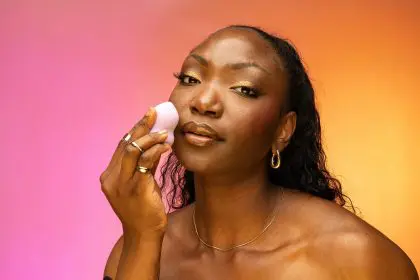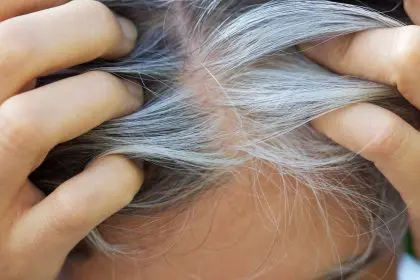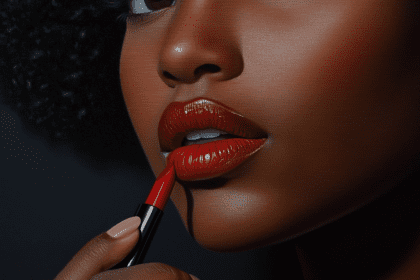Ever notice how the skincare products that work best often smell the worst? That might explain why sulfur treatments haven’t gotten the hype they deserve in the acne-fighting world. While everyone’s obsessing over the latest benzoyl peroxide formula or salicylic acid miracle product, sulfur has been quietly delivering results for those in the know.
But let’s address the elephant in the room. Yes, sulfur brings to mind that distinctive rotten egg smell that makes your nose wrinkle. The good news? Modern formulations have largely solved this problem, making sulfur a much more appealing option for anyone desperate to clear their stubborn breakouts. Let’s dive into why this unsung skincare hero deserves a spot in your bathroom cabinet.
Why sulfur works when other acne fighters fail
Sulfur tackles acne through multiple mechanisms that set it apart from other treatments. Unlike ingredients that simply exfoliate or kill bacteria, sulfur works as a triple threat against breakouts. It dries out the skin’s surface just enough to target those pesky dead skin cells that clog pores. At the same time, it absorbs excess oil that feeds acne-causing bacteria, cutting off their supply line before they can trigger new breakouts.
The most underrated quality of sulfur is its keratolytic properties. This fancy term means it softens and thins the outermost layer of skin, preventing the buildup that leads to clogged pores in the first place. Think of it as opening escape hatches for trapped oil and debris that would otherwise become tomorrow’s pimple. This gentle exfoliation happens without the harsh scrubbing that can actually worsen inflammation.
For those who’ve tried benzoyl peroxide only to end up with red, irritated skin, sulfur offers a gentler alternative that still delivers results. Its naturally antimicrobial properties reduce acne-causing bacteria without the intense drying effect that leaves your skin feeling like the Sahara. This makes sulfur particularly valuable for anyone with sensitive skin who still needs effective acne control.
The unexpected skin types that benefit most
Combination skin types often struggle to find products that address breakouts without over-drying the already parched areas of their face. Sulfur hits a sweet spot by targeting only the areas producing excess oil while leaving drier zones relatively untouched. This selective action makes it uniquely suited for those frustrating T-zone breakouts that coexist with dry cheeks.
Those dealing with hormonal acne often find that traditional treatments fall short because they don’t address the deeper, cystic breakouts triggered by hormonal fluctuations. Sulfur has a unique ability to penetrate beyond the surface, helping to reduce inflammation in those painful under-the-skin bumps that seem to have their own heartbeat. While it won’t replace hormonal interventions completely, it can significantly reduce the severity and healing time of these stubborn breakouts.
Mature skin fighting the double battle of aging and acne has perhaps the most to gain from sulfur treatments. Unlike harsh acne products that can accelerate visible aging by stripping the skin barrier, sulfur addresses breakouts while maintaining skin integrity. Many users with aging skin report that sulfur treatments reduce blemishes without exacerbating fine lines or creating the dullness that comes with over-dried skin.
How to incorporate sulfur without the stink
The evening routine offers the perfect opportunity to let sulfur work its magic without worrying about any residual smell following you throughout the day. Using sulfur-based cleansers or masks before bed allows the ingredient to work overnight while any slight scent dissipates by morning. This timing also aligns with your skin’s natural overnight repair cycle, when cell turnover increases and products can penetrate more effectively.
Spot treatments represent the most targeted way to utilize sulfur without committing your entire face to the ingredient. By applying a sulfur-rich product only to active breakouts, you maximize its impact where needed while minimizing potential dryness elsewhere. The precision approach works particularly well for those who experience localized breakouts rather than all-over acne.
For those concerned about the sensory experience, look for products that combine sulfur with natural masking agents like essential oils. Formulations containing tea tree, lavender, or mint not only camouflage the sulfur scent but often provide additional skin-soothing benefits. The newest generation of sulfur products has largely solved the smell issue through clever formulation, making them far more pleasant to use than their predecessors.
When to expect results and when to switch tactics
Sulfur typically shows its first signs of effectiveness within 48-72 hours for surface-level breakouts. The initial improvement usually appears as reduced redness and decreased size of active pimples. This timeline makes sulfur particularly valuable for those urgent “big event tomorrow” situations when you need quick results without intense irritation.
Deeper, cystic acne requires more patience, with improvements generally appearing after 1-2 weeks of consistent use. The key word here is consistent. Many people give up on sulfur too quickly, not realizing that its gentler approach means results build gradually rather than overnight. The upside to this gradual action is that it typically comes without the rebound flare-ups that often follow aggressive treatments.
If you’ve given sulfur a fair trial of 3-4 weeks without improvement, it might be time to consider combination approaches rather than abandoning it entirely. Many dermatologists recommend pairing sulfur with complementary ingredients like salicylic acid or niacinamide for enhanced results. These combinations often work synergistically to address multiple aspects of acne formation while minimizing the side effects of any single ingredient used at higher concentrations.
Beyond the face
Back and chest acne often respond remarkably well to sulfur treatments when other products have failed. The skin on these areas is thicker and generally less sensitive than facial skin, allowing sulfur to work effectively without causing irritation. Sulfur soaps or body washes provide an easy way to incorporate the ingredient into your shower routine for these harder-to-reach areas.
Scalp acne and folliculitis, often overlooked in skincare discussions, can be effectively addressed with sulfur-based shampoos. These formulations target the excess oil and bacteria that contribute to painful bumps along the hairline and scalp without stripping hair of its natural moisture. The result is clearer skin without the brittle, dry hair that often comes with medicated shampoos.
Understanding the versatility of sulfur opens up new possibilities for tackling acne across different body areas and skin types. Its unique properties make it a valuable addition to your skincare arsenal, either as a standalone treatment or as part of a comprehensive approach to clearer skin. The next time you’re facing a stubborn breakout, consider giving this underrated ingredient a chance to work its magic, smell aside.















